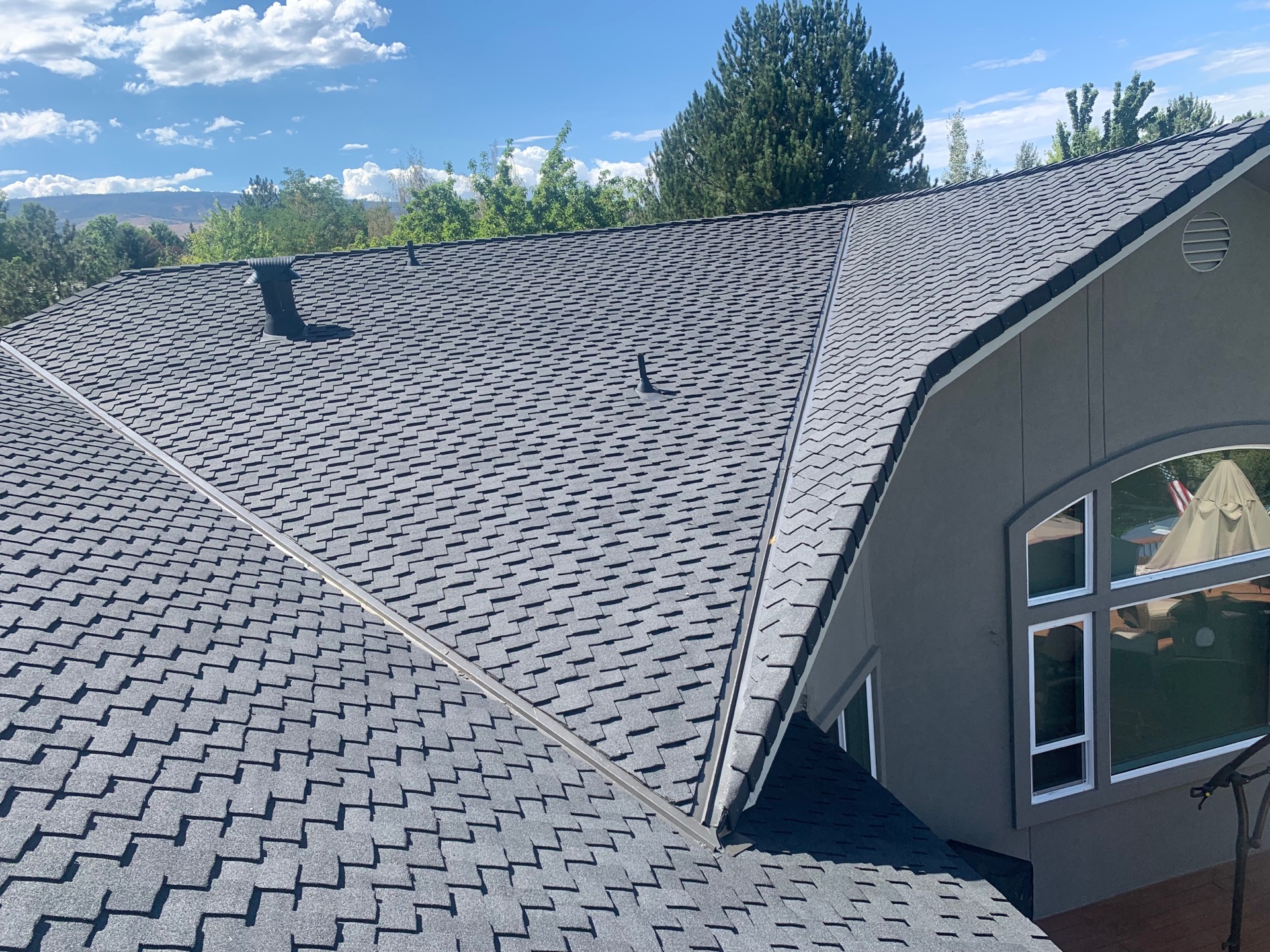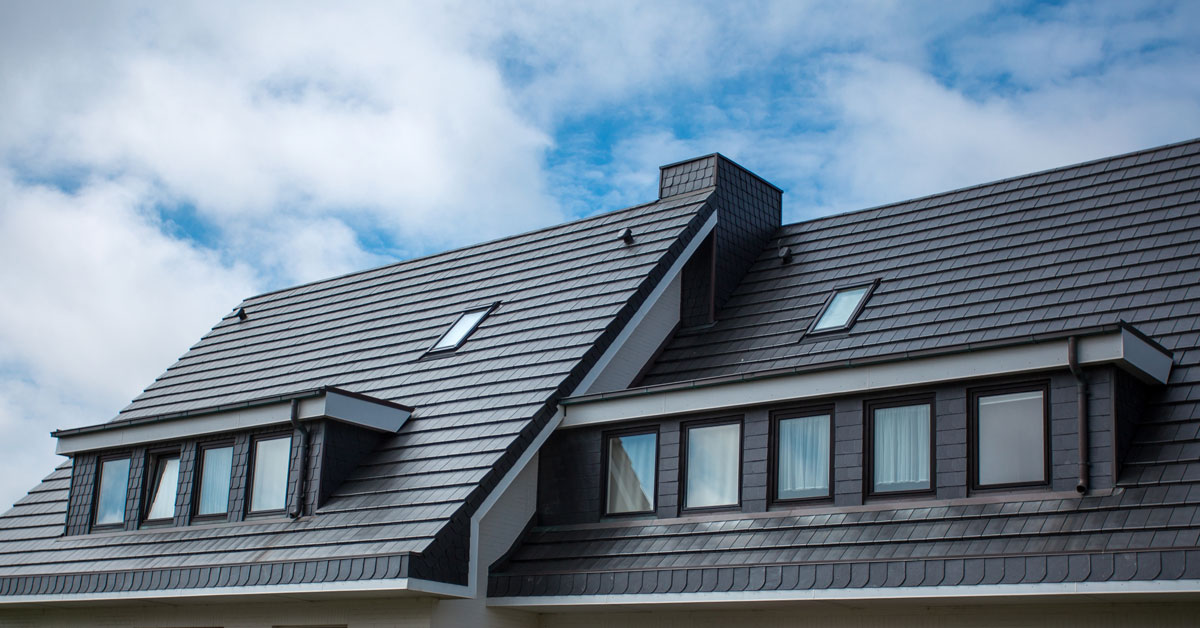The Relevance of Selecting Skilled Roofing Companies Gainesville Florida
The Relevance of Selecting Skilled Roofing Companies Gainesville Florida
Blog Article
Best Practices for Ensuring Correct Roofing Ventilation
A balanced intake and exhaust air vent ratio, frequently 1:300, plays an essential function, with intake vents ideally positioned at the lower edge of the roofing for cool air entry and exhaust vents at the optimal for cozy air departure. Maintaining insulation away from vents is important to stop air movement restriction.
Understand Ventilation Fundamentals
Appropriately recognizing air flow fundamentals is vital for making sure the longevity and performance of roof covering systems. Efficient air flow minimizes wetness buildup and temperature extremes in the attic, both of which can lead to substantial architectural damages with time. A well-ventilated roofing helps in preventing usual issues such as mold and mildew growth, timber rot, and ice dams, which can endanger the honesty of the roof products and the underlying frameworks.
The main goal of ventilation is to assist in the motion of air, enabling a consistent exchange in between the outside and indoor environments. This equilibrium is attained through a combination of consumption and exhaust vents that interact to maintain ideal air movement. Intake vents, normally situated along the soffits or eaves, allow fresh air to enter the attic room room, while exhaust vents, often located at or near the roof covering ridge, enable hot, humid air to get away.
Trick factors affecting the efficiency of roof air flow consist of proper placement, adequate sizing, and ensuring that both consumption and exhaust vents are unhampered. Routine assessment and maintenance are essential to determine prospective blockages, damage, or inefficiencies in the ventilation system, therefore securing the roofing system's efficiency and toughness.
Sorts Of Roof Vents
Roofing vents play a vital role in keeping reliable attic ventilation and, by expansion, the overall wellness of the roof covering system. Different types of roof vents are available, each with unique benefits customized to particular roof covering requirements.

Soffit vents are mounted under the eaves and job in tandem with roofing system vents to make certain a balanced consumption and exhaust system. By enabling cooler air to go into from below, soffit vents facilitate the expulsion of hot air with top vents. Gable vents, situated on the exterior walls of the attic room, offer another reliable remedy, especially in homes with saddleback roofs.
Examine Your Existing Air Flow

Following, take into consideration the age and condition of your roof products and ventilation my link elements. Older systems may not adhere to current building codes or may have worn away gradually, lowering their effectiveness. Conduct a complete assessment to recognize any type of indications of deterioration, such as corrosion, damages, or spaces that might jeopardize the system's performance.
Additionally, measure the attic temperature and moisture degrees. High temperature levels and humidity can indicate insufficient air flow - gainesville fl roofing companies. Make use of a hygrometer and thermostat to obtain exact readings, contrasting them with outdoor problems. Persistent inconsistencies suggest prospective problems that need resolving.
Setup Best Practices
Efficient setup of roof covering ventilation systems is vital for making certain optimum efficiency and long life. Appropriate installation starts with recognizing the specific air flow demands of the building and the roof covering it covers. This entails computing the correct proportion of intake to exhaust vents, normally adhering to the 1:300 policy, which stipulates one square foot of ventilation for every single 300 square feet of attic room floor space.

Consumption vents ought to be mounted at the roofing system's reduced side, typically in the soffits, to permit cool air to go into. Exhaust vents, on the various other hand, must be installed near or at the roofing's peak to facilitate the exit of cozy, wet air.
Seal all air vent links diligently to stop air leaks and possible water infiltration. Usage premium materials and adhere to manufacturer standards to make certain toughness and performance. Furthermore, integrating ridge vents with baffles can dramatically enhance airflow performance by navigate to this website stopping wind-driven rain and snow from getting in the attic room.
Ultimately, specific installation of roof covering ventilation systems reduces potential problems such as mold and mildew growth, ice dams, and structural damage, ensuring the roof's honesty and the structure's overall wellness.
Normal Upkeep Tips
Consistency in maintenance techniques is basic to ensuring the lasting effectiveness of roof covering ventilation systems. Normal evaluations are essential, preferably performed biannually-- in the spring and loss. During these examinations, make certain that vents are devoid of particles, nests, and other blockages that can impede air movement. Look for any type of indicators of dampness accumulation or mold and mildew, as these can indicate incorrect air flow or leakages (roofing companies gainesville florida).
Utilize a soft brush or a vacuum cleaner to get rid of dust and debris from intake and exhaust vents. Be careful not to harm the vent screens or louvers throughout the process.
Correct insulation is just as crucial. Make sure that attic insulation does not block the vents, as this can seriously limit air flow. If any insulation has shifted or settled, rearrange or replace it to maintain an efficient barrier.
Lastly, replace any kind of damaged or missing out on parts without delay. Broken vents, split shingles, or scrubby blinking can all add to poor air flow and ought to be addressed without delay. Regular maintenance guarantees that the roof covering air flow system functions efficiently, thereby extending the life-span of the roofing itself.
Final Thought
Ensuring correct roofing air flow is extremely important for keeping the efficiency and sturdiness of a roofing system. Adherence to the 1:300 intake and exhaust vent ratio, coupled with the critical positioning of vents, is important. Normal biannual inspections, particles cleaning, and ensuring insulation does not block airflow are essential techniques. Executing these ideal techniques will certainly foster a well-ventilated roof, thereby alleviating prospective concerns connected to moisture build-up and excessive warmth, inevitably lengthening the roofing's life expectancy.
A well balanced intake and exhaust vent ratio, generally 1:300, plays a crucial role, with consumption vents ideally put at the lower side of the roofing system for amazing air access and exhaust vents at the top for cozy air departure. Consumption vents, normally situated along the soffits or eaves, allow fresh air to go into the attic area, while exhaust vents, use this link frequently positioned at or near the roof ridge, enable hot, humid air to escape.
Soffit vents are set up under the eaves and work in tandem with roofing vents to ensure a balanced intake and exhaust system. By enabling cooler air to go into from below, soffit vents facilitate the expulsion of warm air through top vents. Adherence to the 1:300 consumption and exhaust vent ratio, coupled with the critical placement of vents, is essential.
Report this page